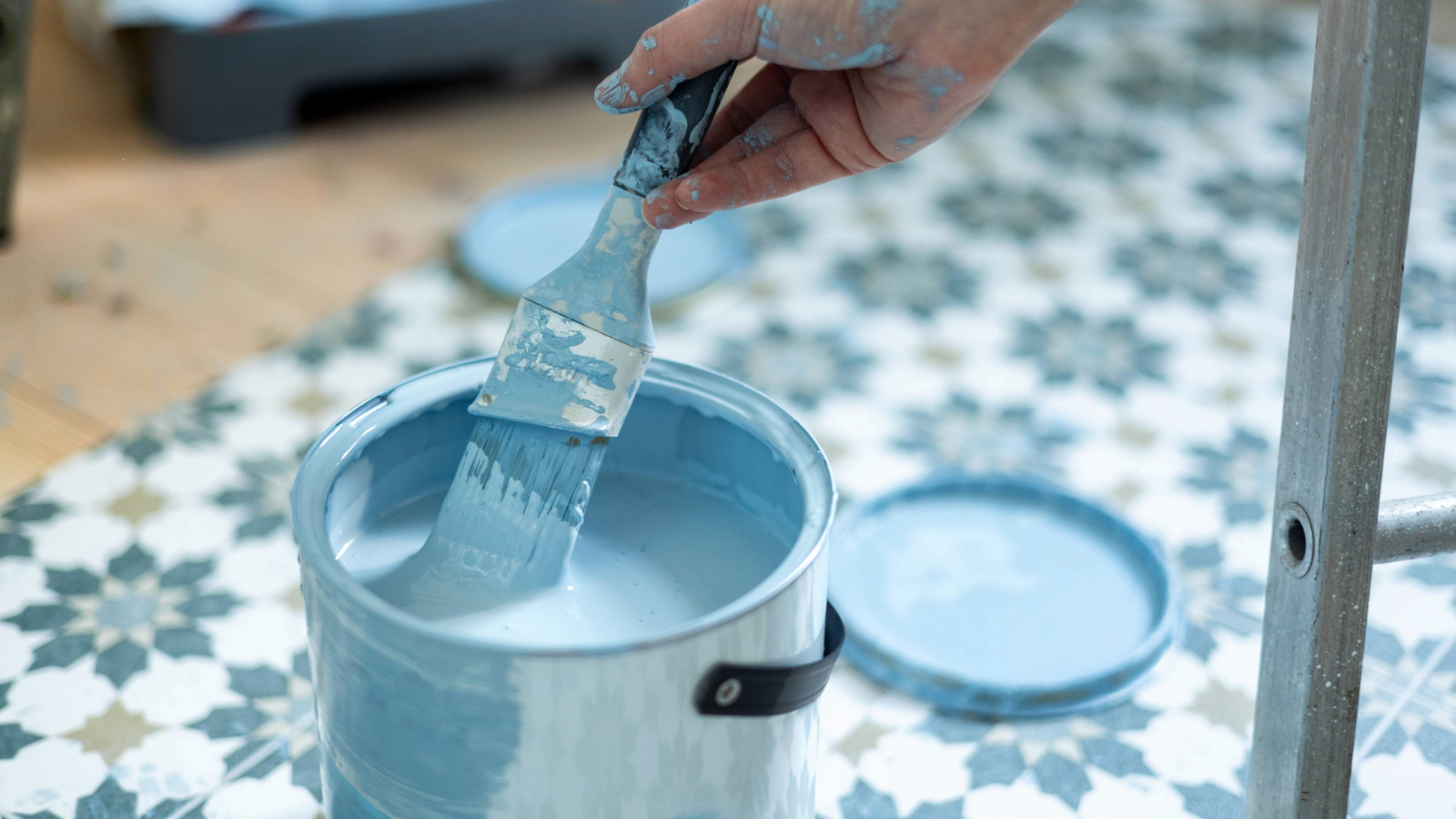Could your worn out denim jeans be the solution to a warm and cosy home? Find out how they can be put to good use once they've left your wardrobe
Usually reserved to the world of fashion, denim jeans can get a new lease of life once recycled, and become denim insulation. We explore where and how it's used
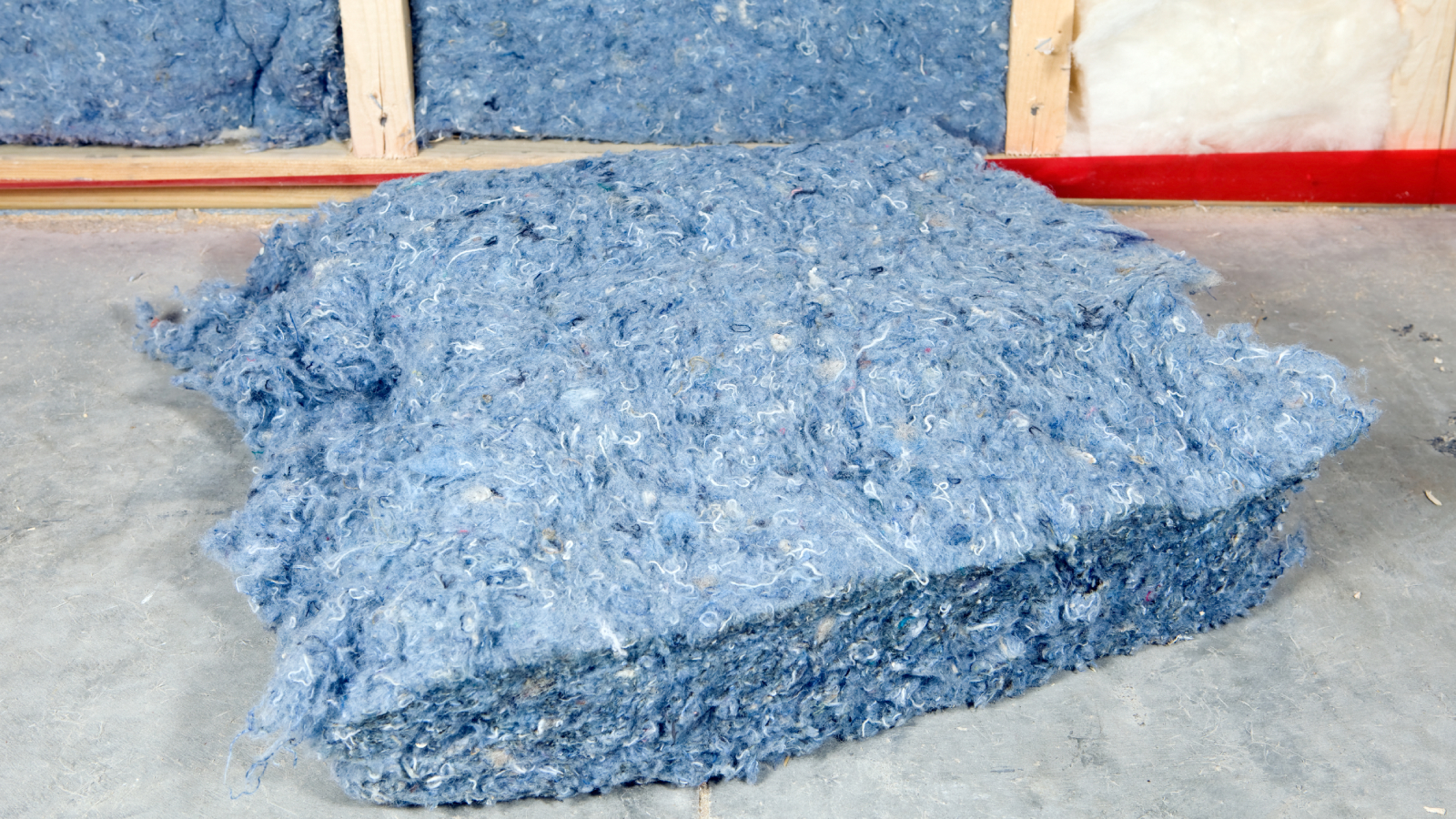
While most homeowners are familiar with the more common types of insulation such as mineral wool or fibreglass, there are also a host of other products included under the heading of eco insulation.
And while hemp, sheep's wool and cellulose may also be products you've heard of, denim insulation is one that might not be on your radar, but is in fact readily available to buy.
So what is denim insulation, and how could your favourite pair of jeans be transformed into a viable insulation product to keep your home warm? We asked the experts to unzip their knowledge banks to explain where, and how, denim can be used to insulate your home.
What is denim insulation?
As the name suggests, denim insulation is a home insulation product made from material. But, it's not always just denim that features in its make up, which means it is sometimes referred to as cotton insulation too.
"Denim insulation is a soft thermo-acoustic material comprised of 85% cotton and velvet fibres," explains James King, managing director of Unity Lime Products Ltd.
"The raw material is sourced by collecting, sorting, and shredding unwanted denim and cotton textiles. The fibres are then bonded using a small percentage of polyester fibre to form the final insulation product."
But what about the rivets, zips and other components in a pair of jeans? "Recycled denim clothing is stripped of items such as zips or buttons and is then shredded into small pieces which are then treated and pressed into insulation mats," expands Mike Storey, insulation expert and technical manager at UKFR Roofing & Insulation. "This means the final composition is primarily cotton."
Bring your dream home to life with expert advice, how to guides and design inspiration. Sign up for our newsletter and get two free tickets to a Homebuilding & Renovating Show near you.
As a result, it's considered an environmentally friendly form of insulation to use in your home. It comes in the form of batts or loose-fill insulation and the product you choose depends on how and where you want to use it.
Shop for eco-friendly insulation
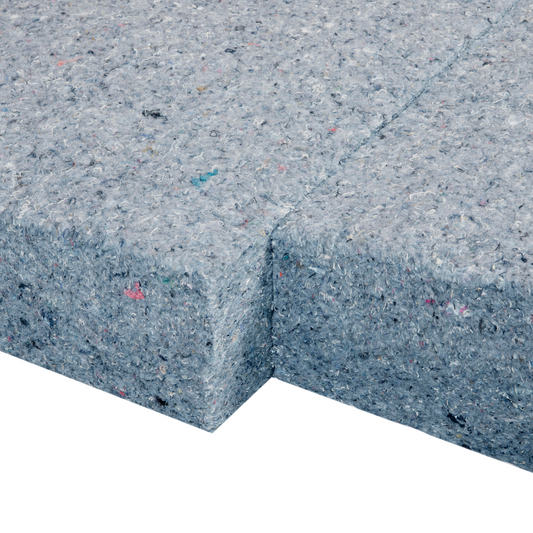
A cotton fibre-based thermo-acoustic recycled denim insulation
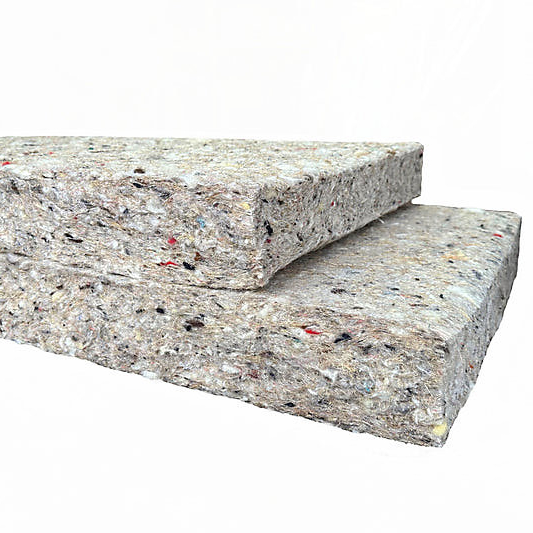
High-performance, low-carbon batts with excellent thermal properties
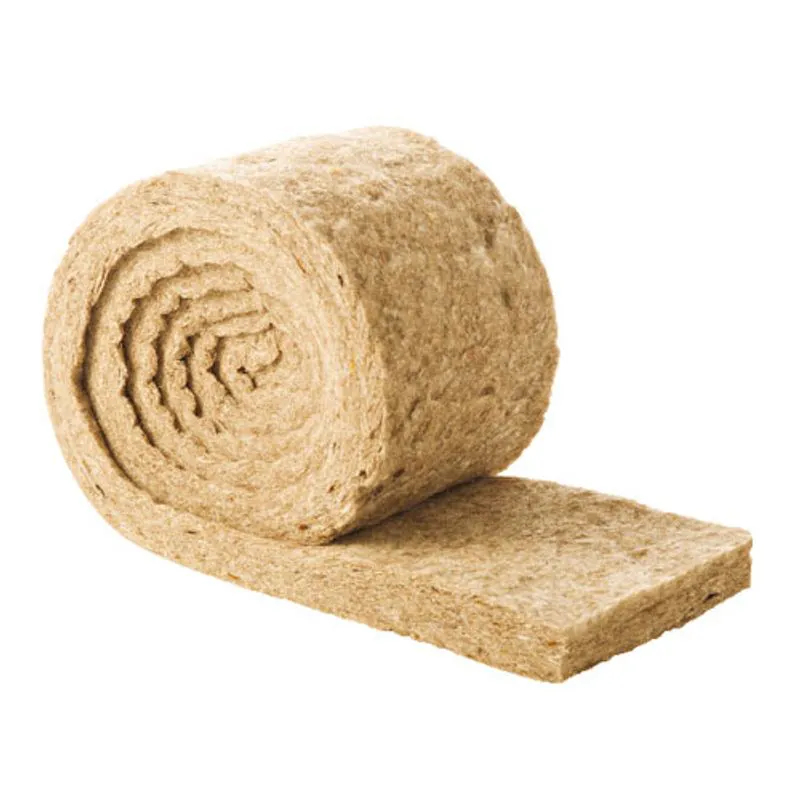
A four-item pack offers a total coverage of 7.8m2 in your loft space

James King is managing director at Unity Lime Products Ltd, a company specialising in supplying a variety of breathable insulation systems for both new build and retro-fit projects.

Mike Storey is an insulation expert and Technical Manager at UK Flat Roofing and Insulation Specialists, which provides a variety of flat roofing and construction supplies in Manchester and across the UK. UK Flat Roofing was founded in 2014 and is now one of the largest roofing and insulation specialists in the country.
Where can you use denim insulation?
Before considering denim insulation for your home renovation, extension or self build, it's important to understand where you can and can't use denim insulation.
"Denim insulation is primarily installed between timber or metal frameworks such as studs, rafters, joists, and partition walls," James King explains. "It can also be laid over joists for attic insulation, where one of its most notable benefits is how pleasant it is to work with – it causes no skin irritation when handled."
However, it's not a case of one product suits all spaces warns Mike Storey. "It can't be used in flat roofs or floors, as it does not have a high enough compression ratio," explains Mike. "And, when used as internal wall insulation, in some circumstances it must be paired with a vapour barrier."
If used as part of a breathable construction it does't need a vapour barrier, but in some applications, such as existing solid wall applications it would. "However, there are often far better options for internal wall insulation on solid wall constructions than denim or rockwool," says James.
"But, with timber frame kits, an airtightness membrane will suffice. I am currently working in an office using denim insulation between studs without a vapour barrier internally. Using a vapour barrier in breathable systems will negate many of the benefits of using the material in the first place," he adds.
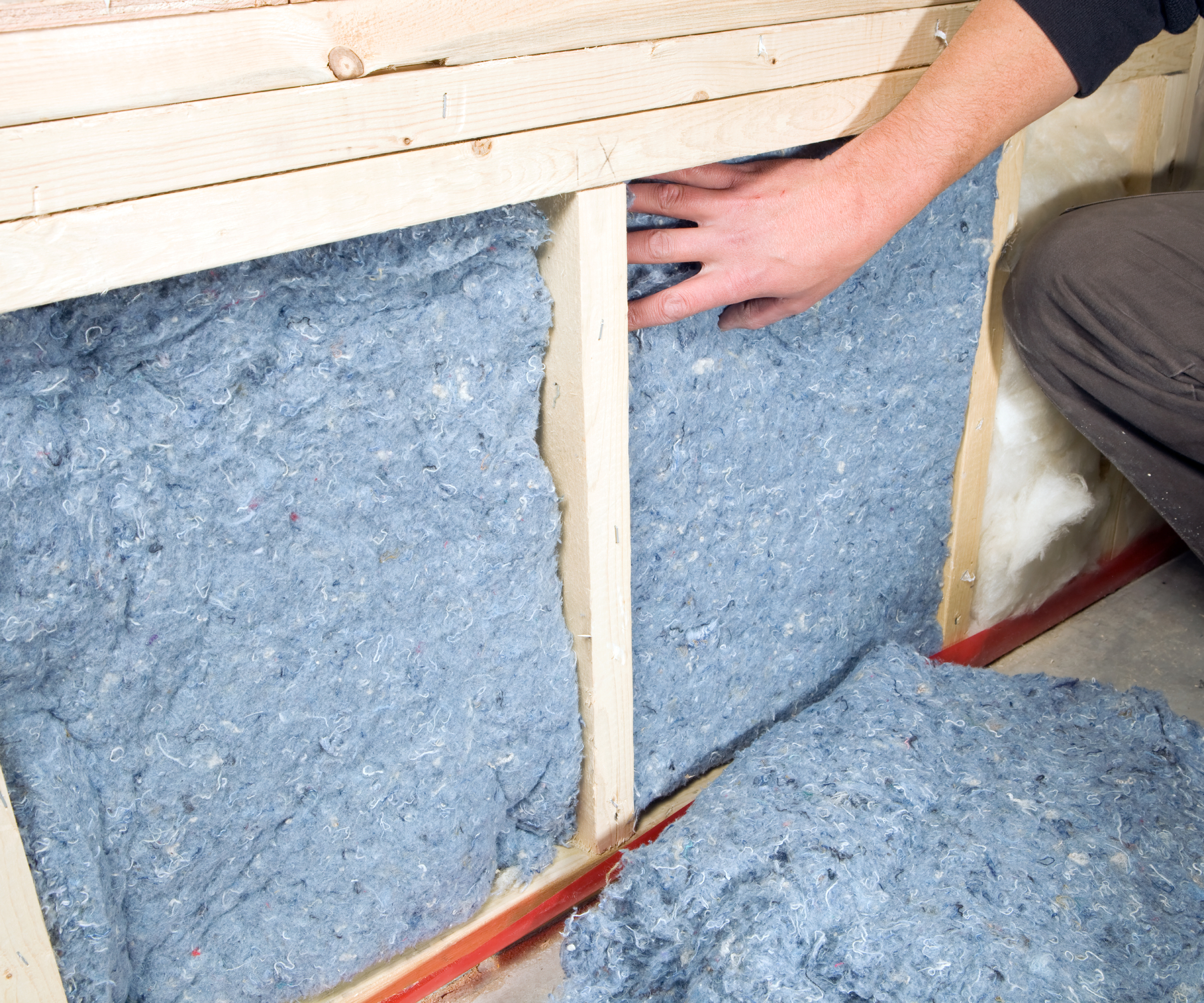
Can denim insulation withstand damp and moisture?
On the question of moisture, if it is installed correctly, how does it stand up to some of the issues home insulation has to deal with such as moisture and damp?
"As it is a breathable product, correct installation is essential to maximise its benefits, including its hygroscopic properties – meaning it can absorb moisture from the air and help create a more comfortable indoor environment," explains James.
"So, when installed as part of an effective system, including proper home ventilation and other vapour-permeable building materials, denim insulation performs exceptionally well in environments where moisture, dampness, and the risk of mould are concerns."
One of its benefits adds James, is that "the natural fibres in denim can absorb and release moisture without compromising the structural integrity or thermal performance of the insulation, helping to maintain a healthy internal environment."
Although, as with every home, maintaining the correct humidity level of between 40-60% is still essential.
Denim insulation vs other types of insulation
Wondering which insulation product you can switch out and replace with a more eco-friendly version such as denim insulation?
"It's a viable alternative to several common types of insulation, typically installed between studs or rafters,' says James King. "For example, it can be used in place of glass wool for insulating cold roof loft spaces, or instead of mineral wool or Polyisocyanurate boards between studs and rafters in a timber-frame building."
On the flipside, if the rising costs for building a house mean you are looking to save some money, it won't necessarily work out to be the cheapest option.
"While it is not the cheapest option compared to fibreglass, for example," confirms James, "for those who wish to use sustainable products with low embodied carbon, it is an excellent choice and one of the most cost-effective sustainable insulation materials available on the market.
"For DIYers, it is also a pleasant product to handle and install compared to conventional insulations," notes James, "which can irritate the skin if appropriate protective equipment is not worn when installing them."
In order to explain the comparisons in more detail, Mike Storey recommends using the following table to identify which of the most popular eco insulation products will best suit your needs.
| Row 0 - Cell 0 | Denim Insulation | Glass Wool | Sheep Wool |
Eco-friendly | Yes – recycled material | Yes – high recycled content | Very – natural material |
Cost (100mm example) | Expensive: £12.50 per sq.m | Cheapest: £5.50 per m2 | Expensive: £13.50 per m2 |
Thermal performance | Good: 0.039 W/mK | Good: 0.040-0.032 W/mK | Good: 0.039 W/mK |
Reaction to fire | Poor: Euroclass E | Best: Euroclass A1 | Poor: Euroclass E |
Acoustic performance | Good: 40dB | Poor: No exact numbers and not good as mineral wool | Good: 40dB |
Reaction to mould | Very good: No mould growth* | Good: Very little mould growth ** | Very good: Naturally resistant due to Keratin protein |
Reaction to damp | Very good: when used in breathable construction | Poor: Loss of thermal performance once damp | Good: Can absorb and release |
* Added chemical to prevent
** Binder is the only part that causes growth, plus added chemical to prevent
FAQs
Does denim insulation have good acoustic properties?
"Yes, denim insulation has excellent acoustic insulation properties," says James King, "and is highly effective in partition walls and between floor joists to improve sound performance in the home.
"A 45 mm batt installed in a metal partition, with acoustic plasterboard on either side, achieved a 46 dB reduction. Denim insulation has also been used to manufacture acoustic panels and for sound deadening in the automotive industry."
Should I use denim insulation?
How you choose of course will come down to personal choice and the specific needs of your project. In Mike Storey's opinion, "denim insulation is a viable alternative to other insulation products, but personally, I feel it's not a match for mineral wool. And from a thermal point of view, you need to remember that PIR boards are almost twice as efficient," he adds, "so you only need almost half the thickness."
On the other hand, James King would have no hesitation recommending denim insulation if you are looking for a sustainable product.
"Is it worth it? Absolutely," he says. "Denim insulation offers many benefits beyond simply preventing heat loss. From regulating humidity and storing heat to having low VOCs, it is an exceptional product that consistently receives positive feedback from those who have used it."
Keen to explore other more eco-friendly types of insulation? Check out our guides to cellulose insulation and sheep's wool insulation. Or, if it's something more specific you need, find out which types of roof insulation are best for insulating the top of your home.

Sarah is Homebuilding & Renovating’s Assistant Editor and joined the team in 2024. An established homes and interiors writer, Sarah has renovated and extended a number of properties, including a listing building and renovation project that featured on Grand Designs. Although she said she would never buy a listed property again, she has recently purchased a Grade II listed apartment. As it had already been professionally renovated, she has instead set her sights on tackling some changes to improve the building’s energy efficiency, as well as adding some personal touches to the interior.
